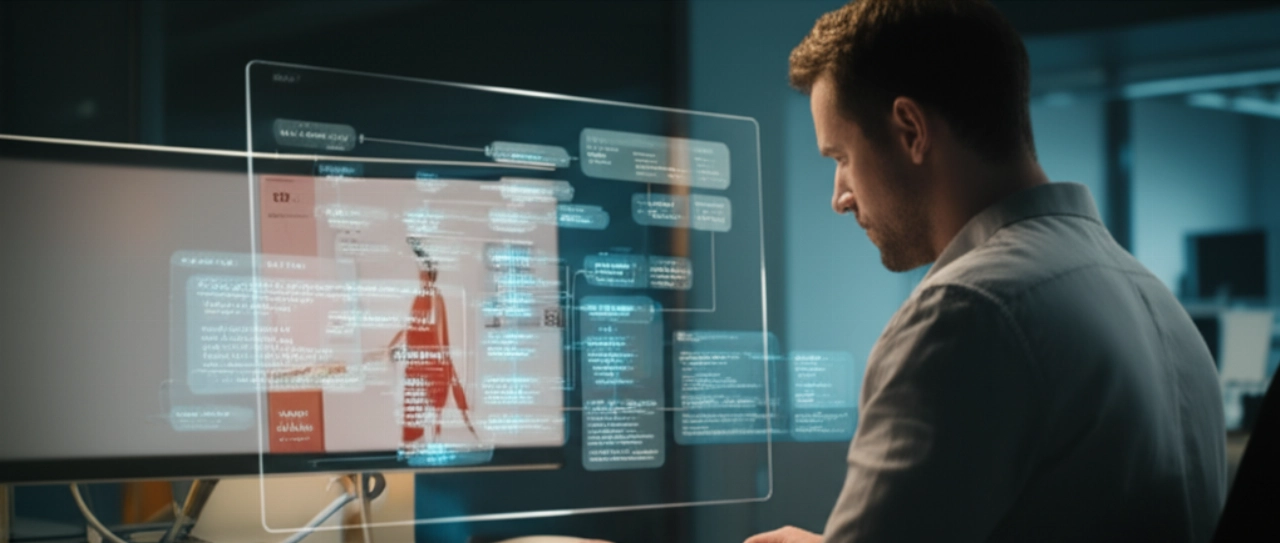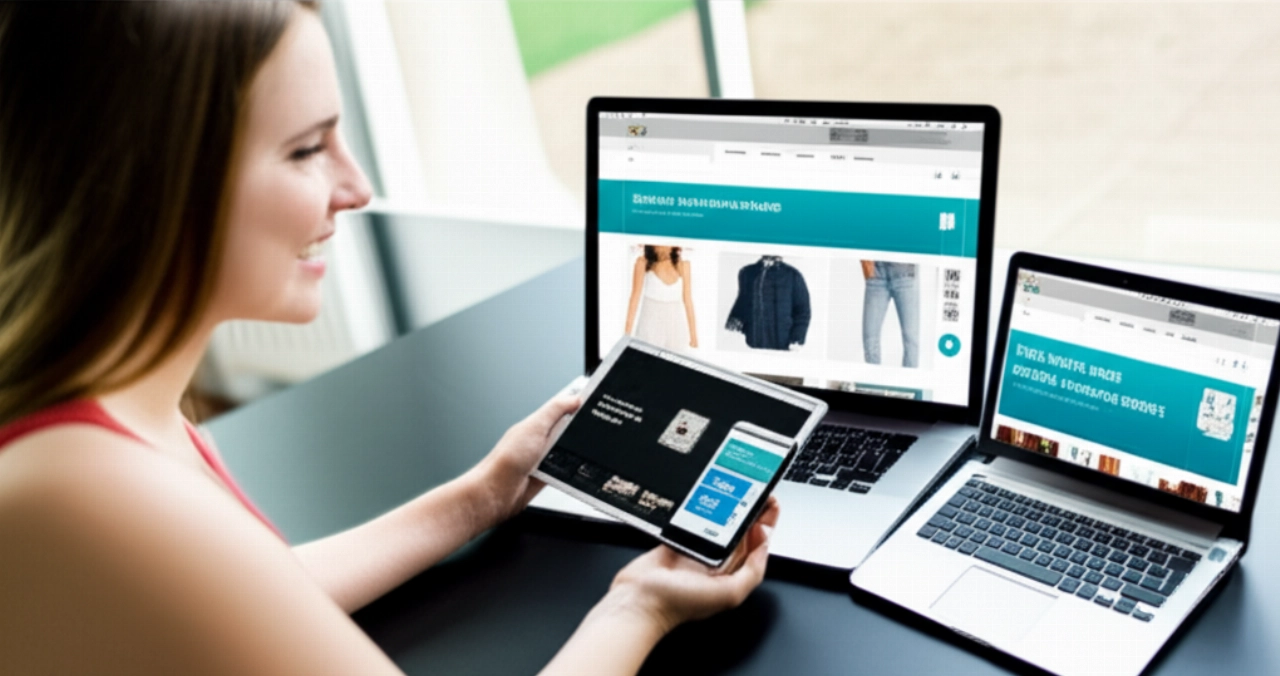Is your current e-commerce platform holding your enterprise back? The promise of Shopify's ease-of-use often collides with the complex demands of enterprise-level B2B operations. You've likely hit the scalability ceiling, wrestled with integration hell, or felt trapped by a 'one-size-fits-all' solution that stifles innovation.
The answer isn't always a complete replatforming away from Shopify; it's a strategic evolution: Shopify headless. This isn't just a technical overview; it's your blueprint for leveraging Shopify headless to achieve unparalleled agility, performance, and a future-proof digital commerce engine. We'll show you how to transform your current limitations into a decisive competitive advantage.

Beyond the Cart: How Shopify Headless Becomes Your Central Business Operating System
For enterprise and B2B organizations, e-commerce is far more than just a shopping cart. It's the central nervous system connecting sales, marketing, operations, and customer service. Traditional, monolithic platforms, while seemingly convenient, often create a rigid structure that hinders true business agility.
Enter Shopify headless. This architectural paradigm decouples the frontend (what your customers see and interact with) from the backend (Shopify's powerful commerce engine, managing products, orders, and payments). This separation allows you to build a custom, lightning-fast user experience on any device or channel, while still leveraging Shopify's robust, secure, and scalable core.
This approach is the cornerstone of composable commerce, aligning perfectly with MACH architecture principles (Microservices, API-first, Cloud-native, Headless). By adopting an API-first strategy, Shopify headless empowers you to:
- Break the Scalability Ceiling: Handle massive traffic spikes and complex B2B workflows without performance degradation. Your frontend can be optimized for speed, independent of backend processing.
- Eliminate Integration Hell: Seamlessly connect with critical enterprise systems like your PIM (Product Information Management), ERP (Enterprise Resource Planning), CRM (Customer Relationship Management), and WMS (Warehouse Management System). Data flows freely, reducing manual errors and operational overhead.
- Future-Proof Your Investment: Your commerce engine becomes modular. As technology evolves, you can swap out frontend components or integrate new services without disrupting your entire platform. This significantly reduces your Total Cost of Ownership (TCO) over time.

The 'Off-the-Shelf' Trap: Why a Standard Shopify Setup Can Strangle Enterprise Growth
Many enterprises initially gravitate towards standard SaaS platforms like Shopify for their perceived simplicity and speed to market. However, this often leads to the 'one-size-fits-all' trap. While excellent for many direct-to-consumer (D2C) businesses, a standard Shopify setup can quickly become a straitjacket for B2B and complex enterprise needs, leading to:
- Restrictive Customization: Implementing complex pricing rules (tiered, volume-based, customer-group specific), custom product configurators, or unique B2B workflows (e.g., quote requests, purchase order management, approval flows) becomes a constant battle against platform limitations.
- Performance Bottlenecks: As product catalogs grow, traffic increases, and custom apps are added, site speed can plummet, directly impacting conversions and customer satisfaction. A slow site kills conversions, especially during peak sales periods.
- Lack of Differentiated Experience: In a competitive market, a generic storefront offers no unique advantage. You need a digital experience that reflects your brand's innovation and caters precisely to your buyers' journey.
The alternative isn't abandoning Shopify, but evolving it. Shopify headless liberates you from these constraints, allowing for bespoke frontends that deliver unparalleled user experiences and operational efficiencies, without the terror of a full, risky platform migration. It's a controlled, strategic evolution that mitigates the fear of a failed migration by focusing on incremental, high-impact changes.

The Shopify Headless Blueprint: 5 Pillars of a High-ROI Enterprise Project
Embarking on a Shopify headless journey requires more than just technical prowess; it demands a strategic roadmap. At Commerce-K, our approach is built on these five critical pillars, ensuring a high-ROI outcome for your enterprise:
- Strategic Planning & Discovery: We begin by deeply understanding your unique business processes, B2B workflows, customer journeys, and long-term growth objectives. This phase defines the specific custom functionalities needed, the integration ecosystem, and the desired performance metrics. It's about mapping your potential and de-risking your investment.
- Architecture Design & Technology Stack Selection: This is where we blueprint your future. We select the optimal frontend framework (e.g., React, Vue, Next.js, Gatsby), design the API strategy for seamless data flow, and plan for robust hosting infrastructure. This ensures your solution is not just powerful today, but scalable for tomorrow.
- Seamless Integrations & Data Synchronization: The true power of headless lies in its ability to connect. We engineer robust integrations with your existing ERP, PIM, CRM, and WMS systems, ensuring real-time data synchronization. This eliminates manual processes, reduces errors, and provides a single source of truth across your organization.
- Performance Optimization & Conversion Rate Optimization (CRO): Speed and user experience are paramount. Our focus isn't just on building a fast site but on engineering a site that converts. We implement advanced caching strategies, optimize image delivery, and conduct rigorous A/B testing to maximize your conversion rate optimization (CRO).
- Post-Launch Optimization & Continuous Evolution: A successful launch is just the beginning. We provide ongoing support, performance monitoring, and strategic guidance to ensure your Shopify headless platform continues to evolve with your business needs, adapting to market changes and leveraging new technologies.
The B2B Agility Case: How a Global Distributor Transformed with Shopify Headless
A major B2B distributor, grappling with severe performance bottlenecks and inflexible pricing structures on their traditional Shopify Plus setup, partnered with us. Their challenge was multifaceted: they needed to implement complex tiered pricing based on customer groups and order volume, facilitate custom quote requests, and achieve blazing-fast site speed across a catalog of over 50,000 SKUs, all while maintaining a seamless user experience.
By implementing a Shopify headless architecture, leveraging a custom React-based frontend and strategic API integrations with their ERP and CRM, we enabled them to:
- Achieve Sub-Second Page Load Times: A 60% improvement in site speed, dramatically enhancing user experience and SEO.
- Implement Dynamic Pricing Rules: Complex tiered pricing and custom discount logic were seamlessly integrated, eliminating manual overrides and improving sales efficiency.
- Streamline B2B Workflows: Custom quote request forms and approval processes were built directly into the frontend, reducing sales cycle times by 30%.
- Boost Conversion Rates: The combination of speed, tailored functionality, and intuitive design led to a 25% increase in B2B conversion rates within the first six months.
This case exemplifies how a strategic move to Shopify headless can unlock significant operational efficiencies and drive measurable revenue growth for complex B2B enterprises.
The Difference Between a Vendor and a Partner: The Commerce-K Philosophy for Shopify Headless
Choosing to go headless is a significant strategic decision, not just a technical one. Many agencies can build a website; few can engineer a future-proof commerce engine that truly understands and addresses enterprise-level complexity. At Commerce-K.com, we don't just execute; we partner.
Our philosophy is rooted in de-risking your investment and ensuring your digital commerce platform becomes a strategic asset, not a source of technical debt. We bring deep expertise in composable commerce, MACH architecture, and complex enterprise integrations, ensuring your Shopify headless solution is robust, scalable, and aligned with your long-term business objectives. We navigate the complexities of PIM integration, ERP integration, and performance optimization, allowing you to focus on your core business.
We understand the fear of a failed migration and the anxiety of multi-million dollar projects. That's why our process prioritizes transparency, meticulous planning, and continuous collaboration, transforming potential risks into opportunities for growth and competitive advantage.
Frequently Asked Questions about Shopify Headless
- What is the typical ROI of a Shopify headless implementation for B2B?
- While specific ROI varies, enterprises typically see significant returns through improved site performance (leading to higher conversion rates), enhanced operational efficiency via seamless integrations, reduced long-term TCO due to architectural flexibility, and the ability to rapidly deploy new features, gaining a competitive edge. Our clients often report double-digit percentage increases in conversion and substantial reductions in manual data handling.
- How does Shopify headless impact our existing SEO and search rankings?
- When implemented correctly, Shopify headless can significantly improve SEO. By decoupling the frontend, we can build incredibly fast, mobile-responsive sites with optimal technical SEO foundations (e.g., server-side rendering, optimized image loading). This leads to better user experience signals and higher search engine rankings. Our process includes meticulous SEO migration strategies to ensure continuity and enhancement of your current rankings.
- What are the key integration challenges with Shopify headless, and how do you address them?
- The primary challenge lies in orchestrating seamless data flow between Shopify (backend) and various enterprise systems (ERP, PIM, CRM, WMS) via APIs. We address this by designing a robust API integration layer, utilizing middleware solutions where necessary, and implementing real-time data synchronization strategies. Our expertise ensures data consistency, reduces manual work, and eliminates operational bottlenecks.
- Is Shopify headless overkill for a mid-market company?
- Not at all. While often associated with large enterprises, mid-market companies facing rapid growth, complex product catalogs, unique B2B requirements, or a strong desire for brand differentiation can greatly benefit from Shopify headless. It provides the scalability and flexibility to grow without constant replatforming, offering a lower TCO in the long run compared to outgrowing a monolithic solution.
- What is the typical timeline for a Shopify headless project?
- Timelines vary based on project complexity, number of integrations, and custom features. However, a typical enterprise-grade Shopify headless implementation can range from 4 to 9 months, following a thorough discovery and planning phase. Our agile methodology ensures transparent progress and iterative delivery, allowing for early feedback and adjustments.
Stop navigating technical debt. Your business deserves a clear digital commerce roadmap that delivers measurable results. The first step isn't a quote; it's a no-obligation Scoping & Strategy Session with our senior architects. We'll help you map your potential and de-risk your investment. Click here, tell us about your project, and discover the opportunities you're currently missing. Start building your future-proof commerce engine today.
Now that you understand the benefits of headless, discover how we execute a seamless ecommerce migration service or explore our expertise in custom ecommerce development for unique business needs.





